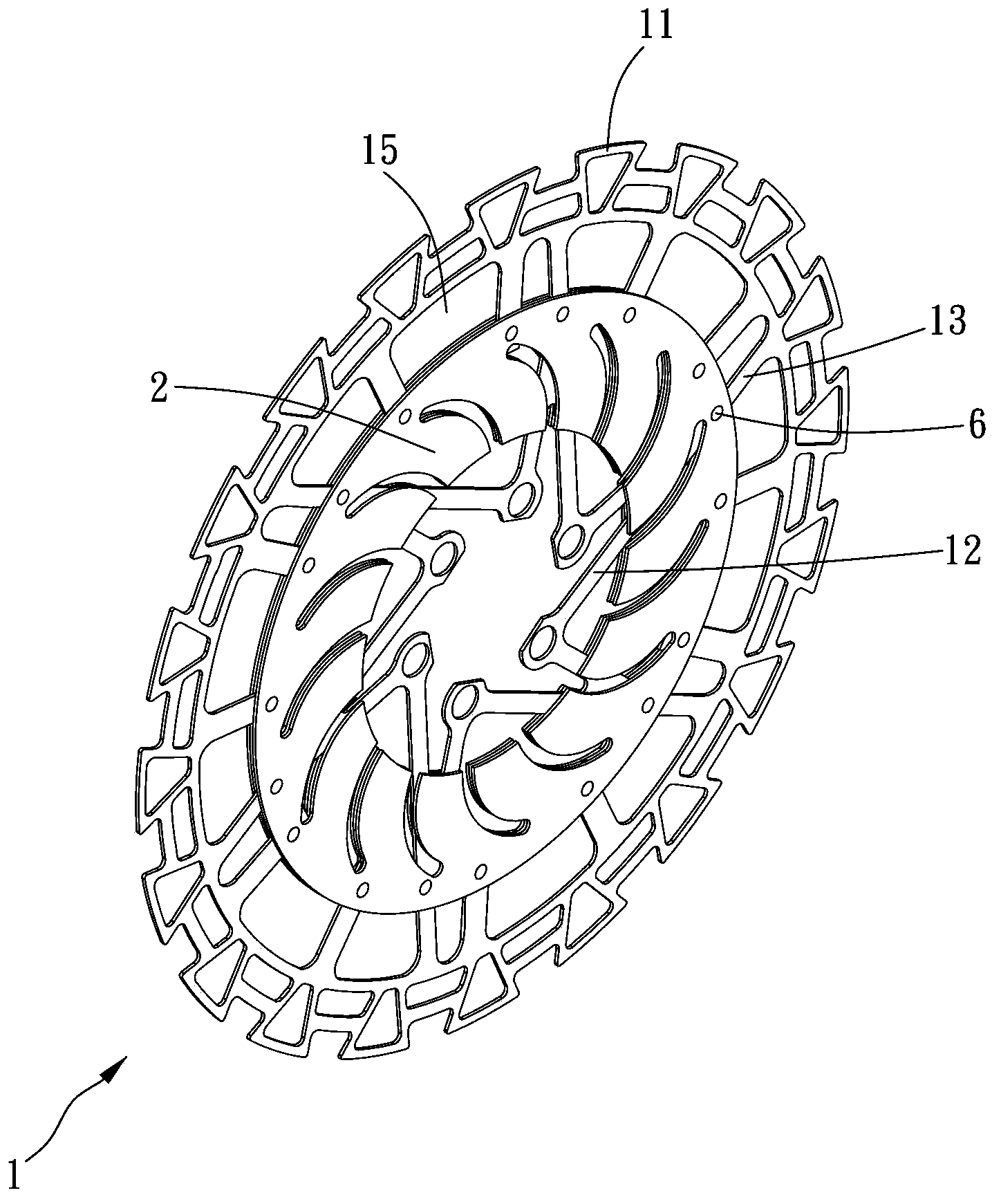Brake disk
A brake and disc technology, applied to bicycle accessories, bicycle brakes, etc., can solve the problems of bicycle disc brake pad deformation, brake failure, and weak structural strength of bicycle disc brake pads, so as to avoid deformation or fracture and have better structural strength Effect
- Summary
- Abstract
- Description
- Claims
- Application Information
AI Technical Summary
Problems solved by technology
Method used
Image
Examples
Embodiment Construction
[0027] The following examples illustrate possible implementations of the present invention, but they are not intended to limit the protection scope of the present invention and are described in advance.
[0028] Please refer to Figure 1 to Figure 3 , which is a brake disc according to the first embodiment of the present invention, which includes a body 1 and at least two heat sinks 2 .
[0029] The body 1 is a one-piece body and has a ring-shaped part. The body 1 defines a central axis with the ring-shaped part. The ring-shaped part has a brake part 11 farther from the central axis for clamping by a brake device of a bicycle. Preferably, the brake part 11 of the body 1 is perforated with a plurality of heat dissipation holes 111 in a direction parallel to the central axis, and the plurality of heat dissipation holes 111 are arranged around the central axis, thereby increasing the distance between the brake part 11 and the central axis. The air contact surface area, when the ...
PUM
 Login to View More
Login to View More Abstract
Description
Claims
Application Information
 Login to View More
Login to View More - R&D
- Intellectual Property
- Life Sciences
- Materials
- Tech Scout
- Unparalleled Data Quality
- Higher Quality Content
- 60% Fewer Hallucinations
Browse by: Latest US Patents, China's latest patents, Technical Efficacy Thesaurus, Application Domain, Technology Topic, Popular Technical Reports.
© 2025 PatSnap. All rights reserved.Legal|Privacy policy|Modern Slavery Act Transparency Statement|Sitemap|About US| Contact US: help@patsnap.com



